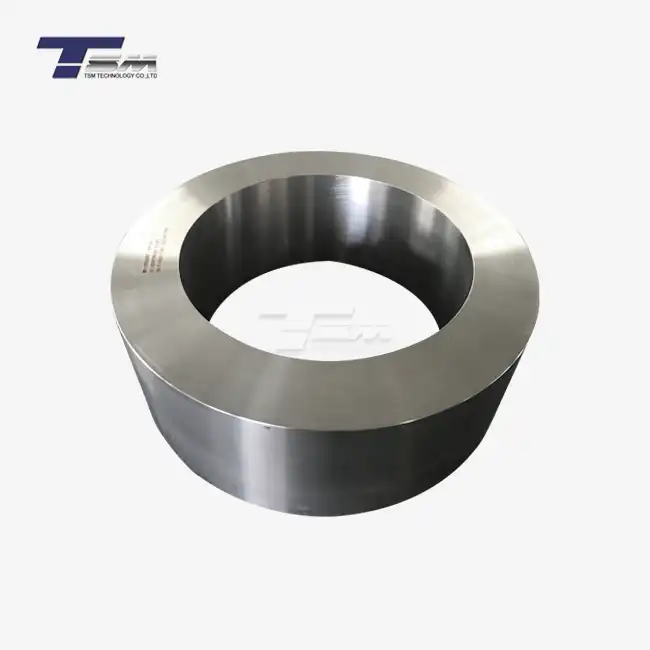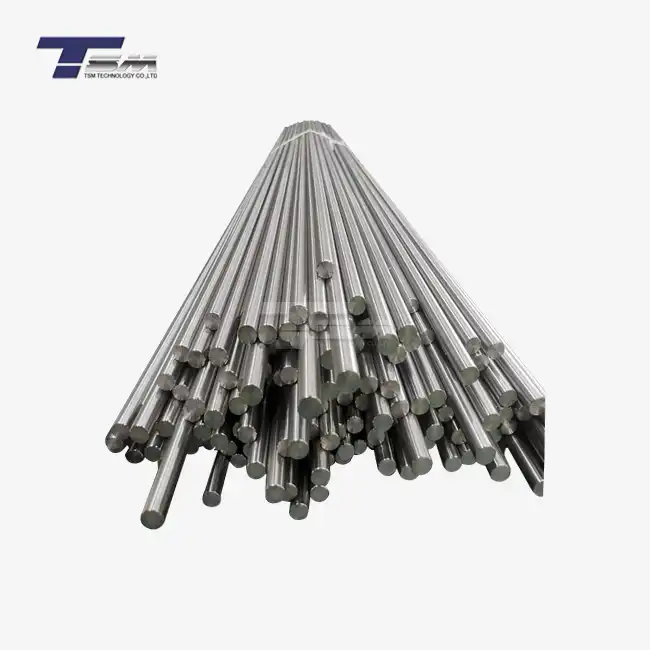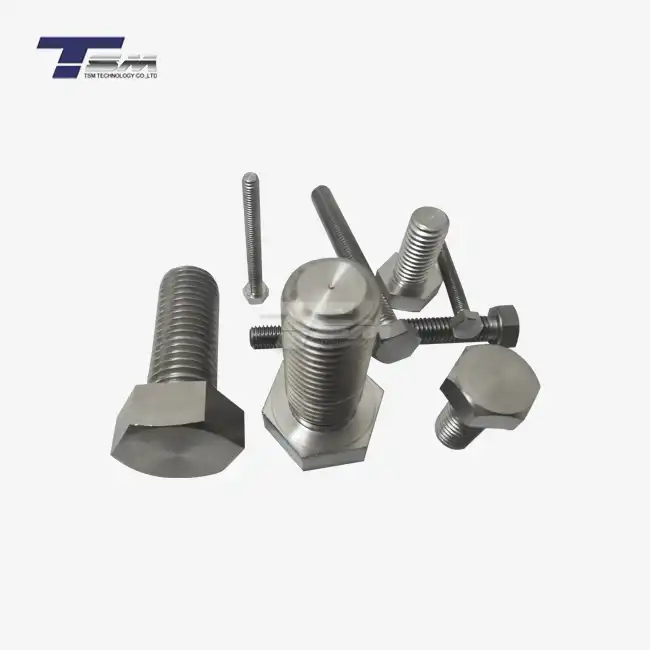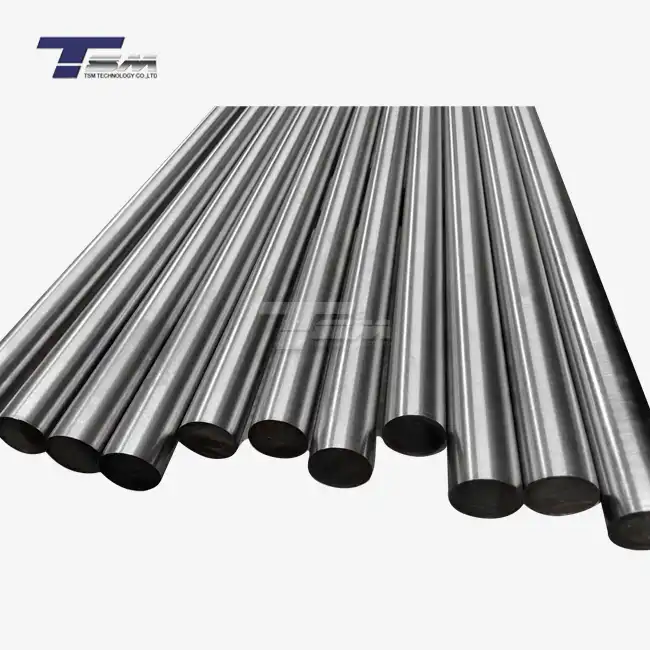Raw Material Selection and Melting Process
Sourcing High-Quality Raw Materials
The journey of creating Hastelloy C276 round bar begins with the meticulous selection of raw materials. High-purity nickel, molybdenum, chromium, and other alloying elements are carefully sourced to ensure the final product meets the exacting standards required for this superalloy. The quality of these raw materials is paramount, as it directly influences the properties and performance of the finished Hastelloy rod.

Vacuum Induction Melting (VIM)
Once the raw materials are prepared, they undergo the Vacuum Induction Melting (VIM) process. This sophisticated technique involves melting the alloy components in a vacuum environment, which prevents oxidation and ensures the highest level of purity. The VIM process allows for precise control over the alloy composition, eliminating unwanted impurities and gases that could compromise the integrity of the Hastelloy C276 round bar.
Electroslag Remelting (ESR)
Following the VIM process, many manufacturers employ Electroslag Remelting (ESR) to further refine the alloy. This secondary melting technique enhances the cleanliness and homogeneity of the metal, resulting in improved mechanical properties and a more uniform microstructure. The ESR process is crucial in producing high-quality Hastelloy round bar that meets the demanding requirements of various industries.
Forming and Shaping Techniques
Ingot Casting and Hot Working
After the melting processes, the refined Hastelloy C276 alloy is cast into ingots. These large, solid forms serve as the starting point for the subsequent shaping operations. The ingots undergo hot working, typically through processes like forging or extrusion, which break down the cast structure and improve the material's overall properties. This step is critical in developing the desired grain structure and enhancing the mechanical characteristics of the Hastelloy C276 rod.
Cold Drawing and Sizing
To achieve the precise dimensions and smooth surface finish of Hastelloy C276 round bar, the hot-worked material undergoes cold drawing. This process involves pulling the metal through a series of dies with progressively smaller diameters. Cold drawing not only refines the bar's shape but also increases its strength and hardness. Multiple passes may be required to reach the final desired size, with intermediate annealing treatments performed as necessary to restore workability.
Straightening and Cutting
The drawn Hastelloy round bar is then subjected to straightening operations to ensure it meets stringent straightness tolerances. This may involve roller straightening or stretch straightening techniques. Once straightened, the bars are cut to standard lengths or custom dimensions as per customer specifications. Precision cutting methods are employed to maintain the integrity of the material and provide clean, square ends.
Heat Treatment and Surface Finishing
Solution Annealing
Heat treatment plays a crucial role in optimizing the properties of Hastelloy C276 round bar. Solution annealing is a key step in this process, involving heating the material to a specific temperature range and then rapidly cooling it. This treatment dissolves precipitates, homogenizes the microstructure, and relieves internal stresses. The result is a Hastelloy C276 rod with enhanced corrosion resistance, improved ductility, and optimal mechanical properties.
Surface Conditioning
To meet the exacting standards of various industries, Hastelloy C276 rod undergoes rigorous surface conditioning. This may include processes such as grinding, polishing, or pickling to remove surface imperfections and create a smooth, defect-free finish. Some applications may require additional surface treatments like passivation to further enhance corrosion resistance. The choice of surface finish depends on the specific requirements of the end-use application.
Quality Control and Testing
Throughout the manufacturing process, comprehensive quality control measures are implemented to ensure the Hastelloy C276 round bar meets or exceeds industry standards. Non-destructive testing methods such as ultrasonic testing, eddy current inspection, and magnetic particle inspection are employed to detect any internal or surface defects. Chemical composition analysis, mechanical property testing, and corrosion resistance evaluations are also conducted to verify the material's conformance to specifications. This rigorous quality assurance process guarantees that each Hastelloy round bar delivers the exceptional performance characteristics expected from this high-performance alloy.
Conclusion
The manufacturing process of Hastelloy C276 round bar is a testament to the precision and expertise required in producing high-performance alloys. From the careful selection of raw materials to the final quality control checks, each step is meticulously executed to ensure the resulting product meets the most demanding industrial requirements. The combination of advanced melting techniques, sophisticated forming processes, and precise heat treatments results in a Hastelloy C276 rod that offers unparalleled corrosion resistance and mechanical properties. As industries continue to push the boundaries of material performance, the role of expertly manufactured Hastelloy C276 round bar in critical applications remains more important than ever.
Contact Us
For more information about our Hastelloy C276 round bar products and how they can meet your specific needs, please don't hesitate to contact us at info@tsm-technology.com. Our team of experts is ready to assist you in finding the perfect solution for your application.



